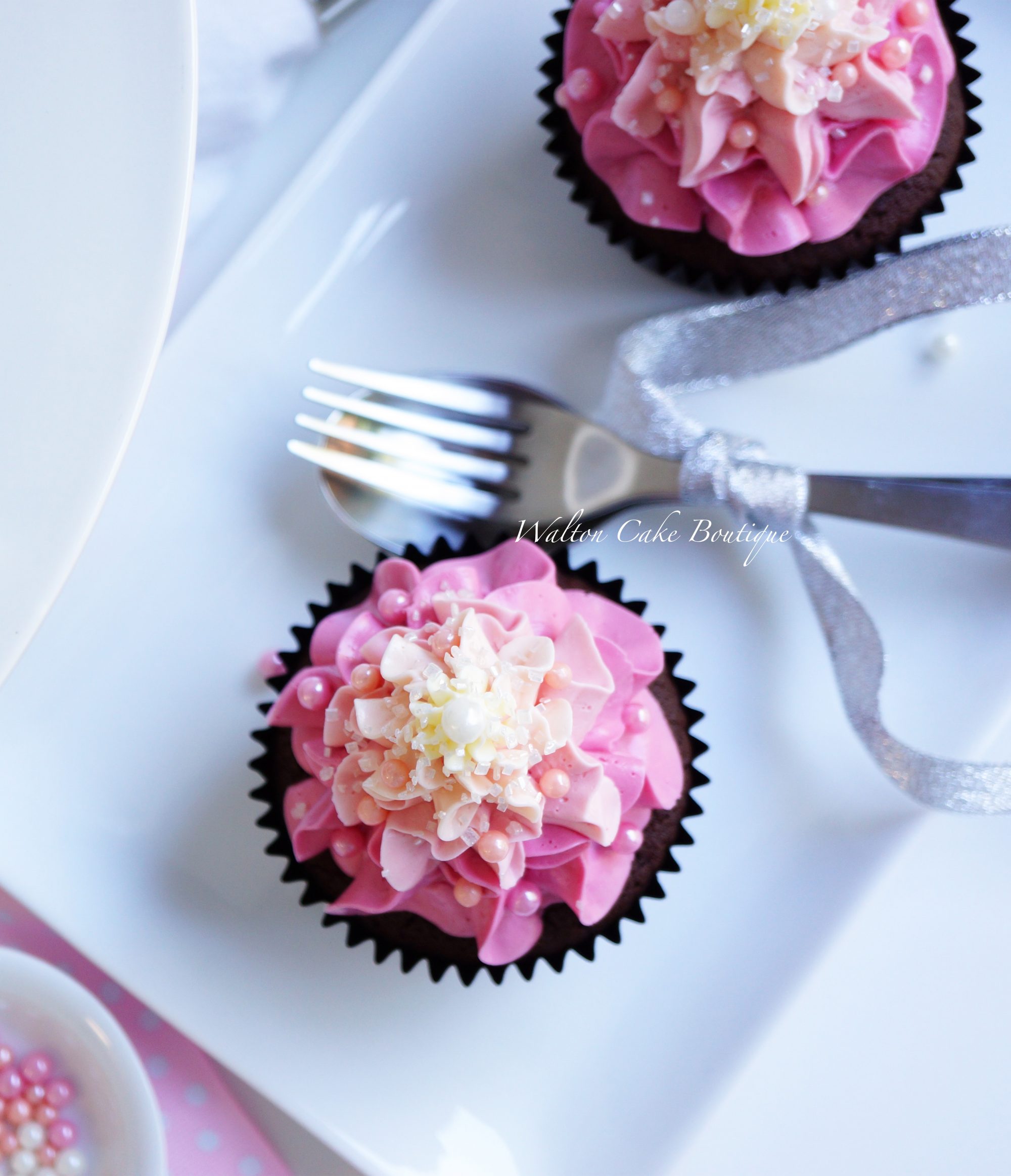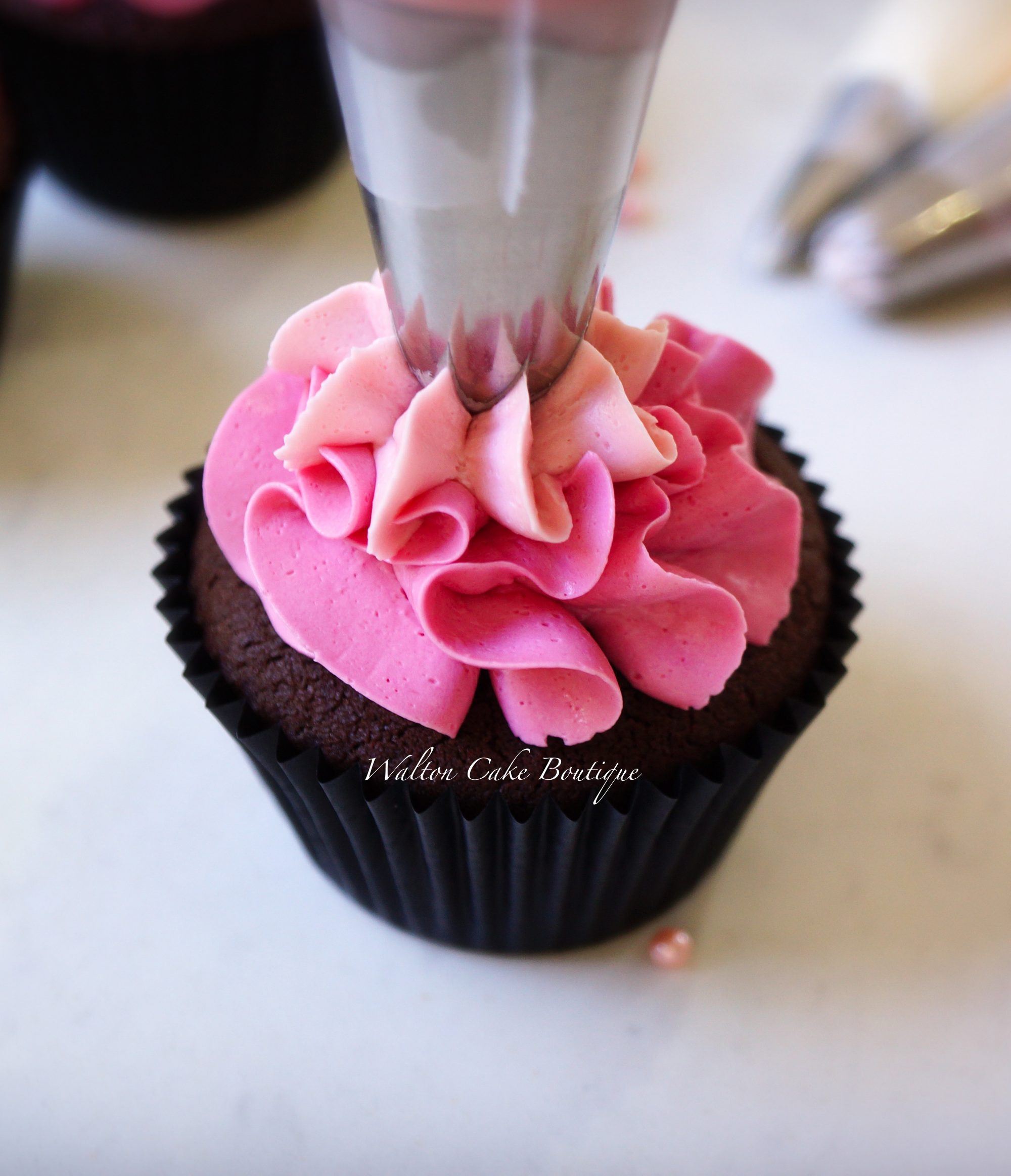by Katherine Walton on May 18, 2022 30 Comments


This Italian Buttercream is enriched with flavour that is not too sweet as traditional buttercream can be. It is also less buttery in flavour than its cousin Swiss Meringue Buttercream. It does share the same silkiness and delicate soft texture as Swiss Meringue Buttercream. It is very stable and pipes amazingly.
I make my Italian Buttercream recipe a little different to how a traditional recipe is made. The main difference is that I beat the butter separately and then I add the Italian meringue to the beaten butter and mix them together at the end. Watch my full step by step video below so that you can see each stage throughout this recipe.
How are the ingredients measured in this recipe?
In this recipe and in all of my recipes I provide all ingredients in grams and in mL (millilitres) where applicable. I also provide the ingredient quantities in METRIC cup measurements. However, be aware that cup measurements and spoon measurements vary in different countries. Therefore, I highly recommended the use of scales where applicable to measure ingredients to achieve exactly what the recipe intends.
What is caster sugar and can I substitute it in this recipe?
Caster Sugar is also known as super fine granulated sugar. Not to be confused or replaced with icing sugar also known as powdered sugar and confectioners’ sugar. You may replace the caster sugar with standard granulated white sugar in this Italian Buttercream recipe as the sugar is dissolved in a liquid.
What does cool temperature but soft butter mean?
The butter must be cold to the touch but soft. That means you should be able to press with your finger and make an indentation. If the butter looks like it is melting or too soft, you can put it back in the fridge until it feels cold to the touch again and firms up a little bit. Five minutes should suffice.
How to separate egg whites from egg yolks?
It is best to separate the egg whites from the egg yolk when the eggs are cold. Then leave the egg whites in a bowl covered to bring to room temperature.
Do I need to use a food thermometer?
I recommend the use of a digital food thermometer in order to know if the temperature of the sugar syrup has reached 115 degrees Celsius (239 Fahrenheit), which is the soft ball stage the sugar syrup needs to reach.
How to store this Italian Buttercream and what is its shelf life?
This frosting can be kept at cool room temperature for up to 3 days. It can be kept refrigerated for up to 5 days. Bring to room temperature before use. You can re whip with a metal spoon, or with a mixer.
Troubleshooting
The Italian Buttercream becomes runny when I mix the meringue and the butter. What can I do to prevent it and fix it?
There are a few factors that can directly affect the stability and the end result of this Italian Buttercream.
The first thing is to make sure that the frosting has the right ratio of butter to meringue to successfully achieve a stable, easy to pipe and silky smooth Italian Buttercream. The butter is the key ingredient that gives this Italian Buttercream its structure and firmness. Using less butter than what is required for the amount of meringue in this recipe may yield a runny frosting.
It also very important to make sure that the meringue has completely cooled before adding it to the beaten butter. A warm meringue will “melt” and soften the butter, which will make it difficult to achieve a firm frosting. You can refrigerate the meringue while the butter is being beaten if you wish to speed up the process. You may also refrigerate the runny frosting for five to ten minutes and beat it again in the mixer.
Other small factors such as mixing the frosting in warm bowl can affect how well the Italian Buttercream comes together. Also preparing the Italian Buttercream in a warm or hot room can also affect the end result and could yield a frosting that does not firm up or appears runny or lumpy as if the ingredients are not incorporating together.
Watch the full step by step video provided with this recipe for visual instructions. If you have any questions leave me a comment and I’ll be more than happy to guide you through.
Love this recipe and everything on your page! I’m fifteen and your smooth buttercream recipe was the first to work for me, now I’m a follower for life lol. I was wondering if at any chance you have a chocolate buttercream recipe?
This sounds very complex with opportunities for failure in the mixing of ingredients, i.e. marangue into butter. Comments/helpful hints?
Hi ☺️ Thank you so much. Will you be trying it?
Perfect.
I love it🤗👍
De nada ☺️. Me avisas si tienes alguna pregunta.
De nada ☺️
Muchísimas gracias!!
Can i use Italian meringue buttercream on top of a cake with a fondantcover?
Hi ☺️,
Will you be using the Italian buttercream as piped decorations on top of the fondant covered cake?
Yes that was the plan!! 🥳
Yes it’s totally fine to pipe or use Italian buttercream on top of fondant. If you pipe on an area you didn’t want and wipe it off it may just leave a mark on the fondant. Otherwise it’s all good. ☺️
Aww thank you! 😊 so happy you found it! Let me know if you have any questions or anything else on my blog.
Hi Caleigh ☺️
That makes me really happy! Thank you! I’m making a few flavoured frostings this week and will post the recipes up.
Hi Lois,
Yes I can totally understand that. I made 3 different batches and the ones with less butter weren’t as stable. One I made with 300 grams of butter turned soupy and runny. So you definitely need the right ratio of butter. I would also recommend to beat the butter when it’s still cold but not hard. So if it’s been out of the fridge for 30 minutes or so. Also when you first add the butter into the meringue it can look like it’s separating but you just have to keep beating and it will start to become thicker and look like a smooth cream. If you can watch my full how to video you can see this happening with the butter.
Hope that helps. Let me know if you have any other questions.
😊
Thank you! I love watching your short piping videos on IG.
Which buttercream is smoother and easier to cover a cake in, Swiss or Italian?
Thanks 🙂
Hi Candace ☺️,
They are both very similar, some could say almost identical in flavour and texture, as well as the way they cover and spread on a cake.
Personally, I tend to use Swiss Meringue Buttercream more often as I find it quicker and easier to prepare.
I hope that helps ☺️
Hi! I love this recipe. I can eat it with a spoon! (Of course I do that in a room, by myself so I don’t have to share :D). Is there a way to make this chocolate?
Thank you Suzie. 😊 You can mix with with the chocolate ganache on my recipes. Add the whole thing. Mix it once the ganache has cooled but it is still in fluid form or you will end up with chunks of chocolate in the Italian Buttercream. You can also add powdered chocolate but or plain melted chocolate too.
Can i use granulated sugar instead if caster sugar?
Hi 😊, Yes certainly as the sugar will be dissolved into a sugar syrup.
Curious as to why you don’t add salt?
Hi 😊!
I have made this recipe with unsalted butter with the addition of a pinch of salt and also with salted butter. I found the salt changed the flavour of the frosting and actually made it quite salty and pronounced. I know some recipes call for the addition of salt in different frosting recipes, but it is not needed unless you want to alter, change or enhance the flavour.